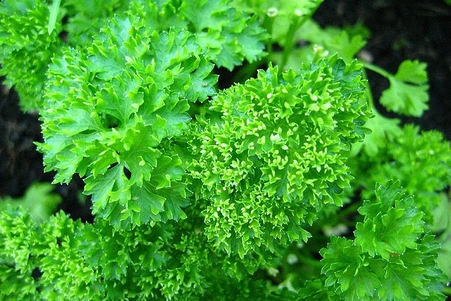Our online store is now live!
Seasonal Produce
Whether you're a chef, wholesaler or a retailer, we know quality is important to you.

Availablity Period
We're currently growing
Curled Parsley
Garden parsley is a bright green, hairless, biennial, herbaceous plant in temperate climates, or an annual herb in subtropical and tropical areas.
Where it grows as a biennial, in the first year, it forms a rosette of tripinnate leaves 10-25 cm long with numerous 1-3 cm leaflets, and a taproot used as a food store over the winter.
In the second year, it grows a flowering stem to 75 cm tall with sparser leaves and flat-topped 3-10 cm diameter umbels with numerous 2 mm diameter yellow to yellowish-green flowers. The seeds are ovoid, 2-3mm long, with prominent style remnants at the apex. One of the compounds of the essential oil is apiol. The plant normally dies after seed maturation.
Make an EnquiryBrowse by letter Browse by Month
C

Chantenay carrots
Chantenay carrots are super convenient – no need to peel, quick and easy to cook and taste delicious. They are stored in the ground under straw ... more
Chantenay carrots are super convenient – no need to peel, quick and easy to cook and taste delicious. They are stored in the ground under straw during autumn and winter. This is to retain their freshness and protect them from frosts.
Less
Cheltenham beetroot
Beetroot season runs all winter and offers a consistency not seen with many other vegetables. Perfect cold in salads or warm as an accompaniment, the ... more
Beetroot season runs all winter and offers a consistency not seen with many other vegetables. Perfect cold in salads or warm as an accompaniment, the beetroot’s subtle, earthy flavours and vibrant colours make these a must for all chefs.
Less
Clementines
They are small very sweet and usually seedless. Most people think of them as small tangerines but they’re a different variety entirely with a d... more
They are small very sweet and usually seedless. Most people think of them as small tangerines but they’re a different variety entirely with a distinctive taste. Imported from Spain, Morroco and other parts of North Africa, clementines are a cross between a sweet orange and a Chinese mandarin.
Less
Cobnuts
A cobnut is a cultivated variety of hazelnut, just as a Cox is a cultivated variety of apple. We have enjoyed wild hazelnuts from time immemorial. Th... more
A cobnut is a cultivated variety of hazelnut, just as a Cox is a cultivated variety of apple. We have enjoyed wild hazelnuts from time immemorial. They’ve been grown in gardens and orchards since at least the 16th century.
Cobnuts are delicious fresh on their own. They can also be eaten with other ingredients, such as in a salad; some people like to eat them with a little salt. If they are to be chopped, this is best done shortly before eating them, as they do not keep well once they have been cut. Cobnuts are also excellent roasted, which brings out their flavour. Roasted nuts can be eaten on their own, or used whole, chopped or ground to flavour pasta, meringues, fruit crumbles, cakes, cake toppings etc.
Less
Crones
This vegetable, pronounced “crone”, looks part larva, part seashell, part Michelin Man. It tastes nutty and sweet like a Jerusalem artich... more
This vegetable, pronounced “crone”, looks part larva, part seashell, part Michelin Man. It tastes nutty and sweet like a Jerusalem artichoke and snaps between your teeth like a water chestnut. The plant belongs to the mint family but the edible parts are the small white tubers. They can be eaten raw as one might a Jeruseleum artichoke (no relation) or cooked like a potato or other starch.
Less
Curly Parsley
This slightly peppery herb is commonly used as a flavouring and garnish. Curly parsley is very coarse relative to flat leaf parsley and may be describ... more
This slightly peppery herb is commonly used as a flavouring and garnish. Curly parsley is very coarse relative to flat leaf parsley and may be described as having a younger, sharper flavour than flat leafed parsley. Where it grows as a biennial, in the first year, it forms a rosette of tripinnate leaves 10–25 cm long with numerous 1–3 cm leaflets, and a taproot used as a food store over the winter. In the second year, it grows a flowering stem to 75 cm tall with sparser leaves and flat-topped 3–10 cm diameter umbels with numerous 2 mm diameter yellow to yellowish-green flowers. The seeds are ovoid, 2–3mm long, with prominent style remnants at the apex. One of the compounds of the essential oil is apiol. The plant normally dies after seed maturation.
Less